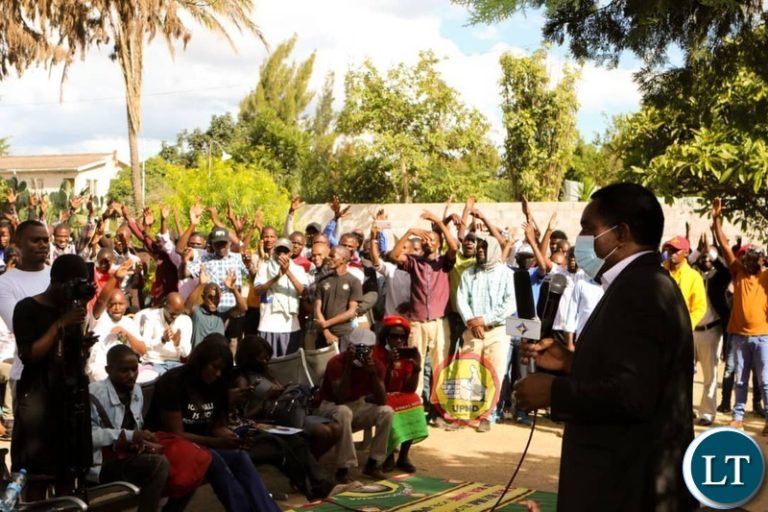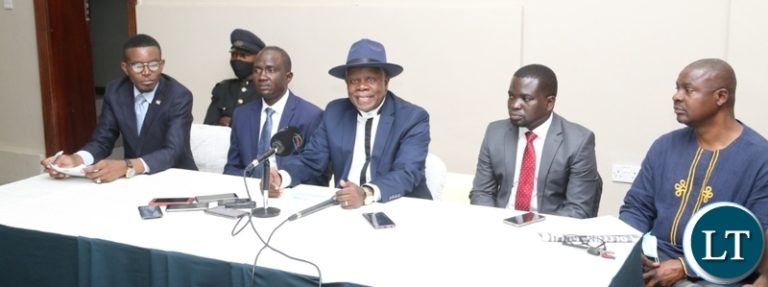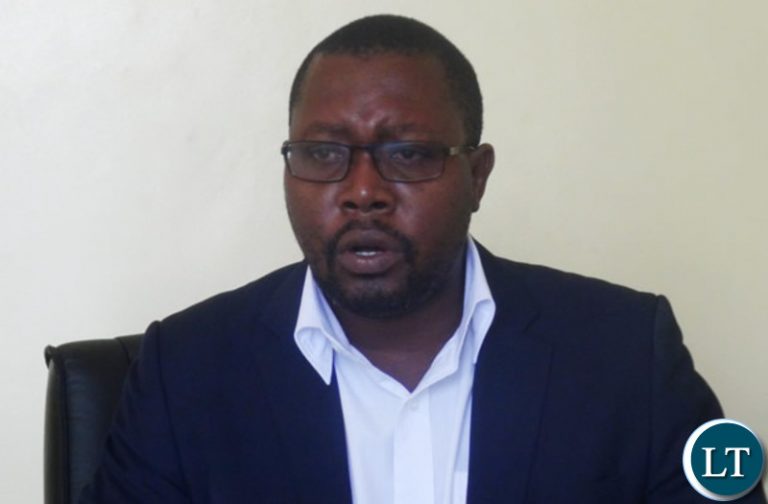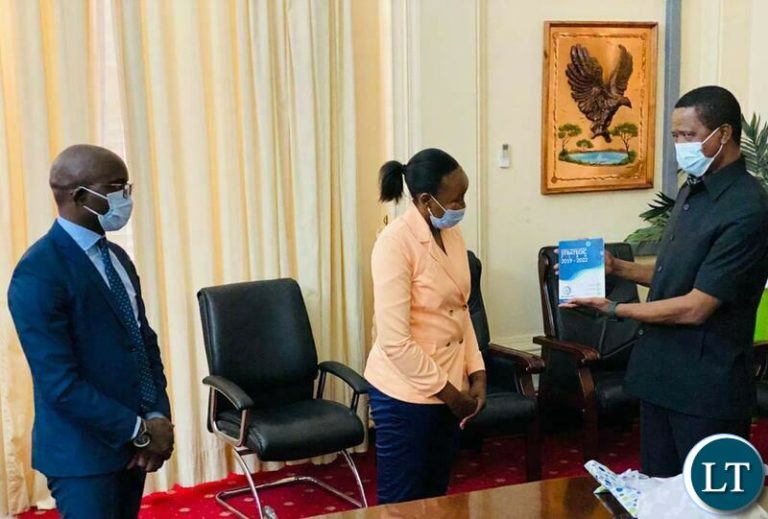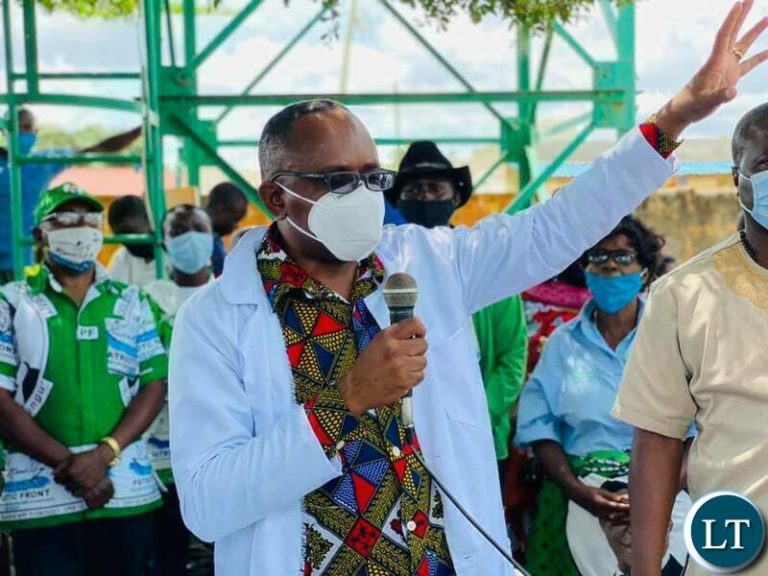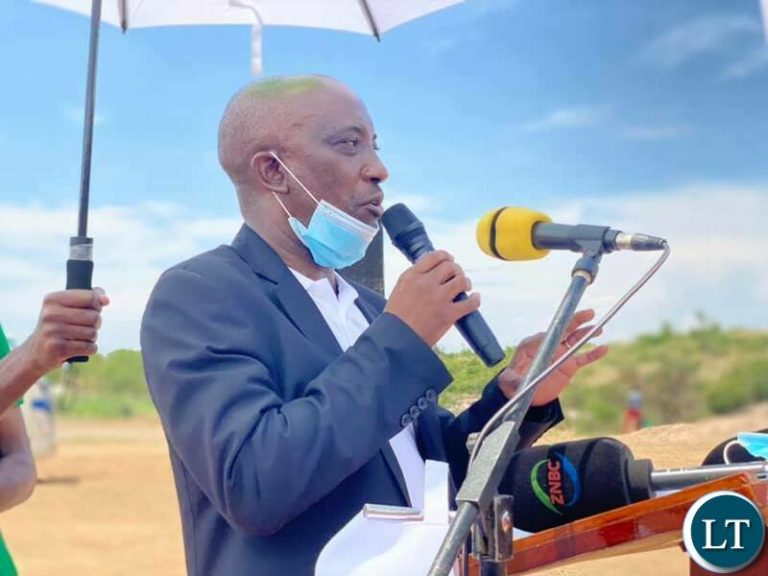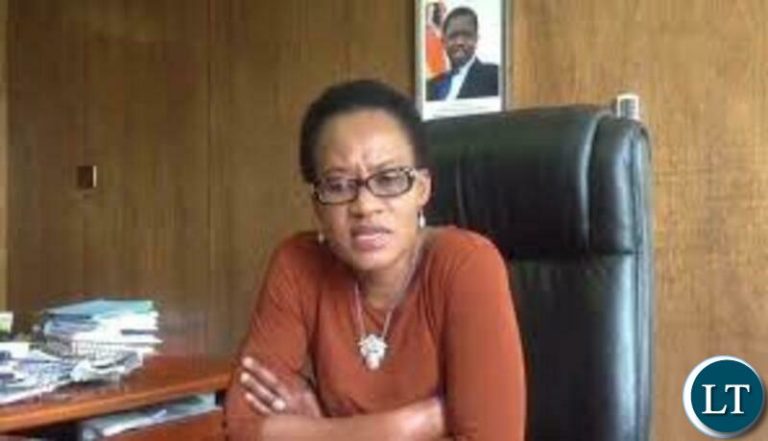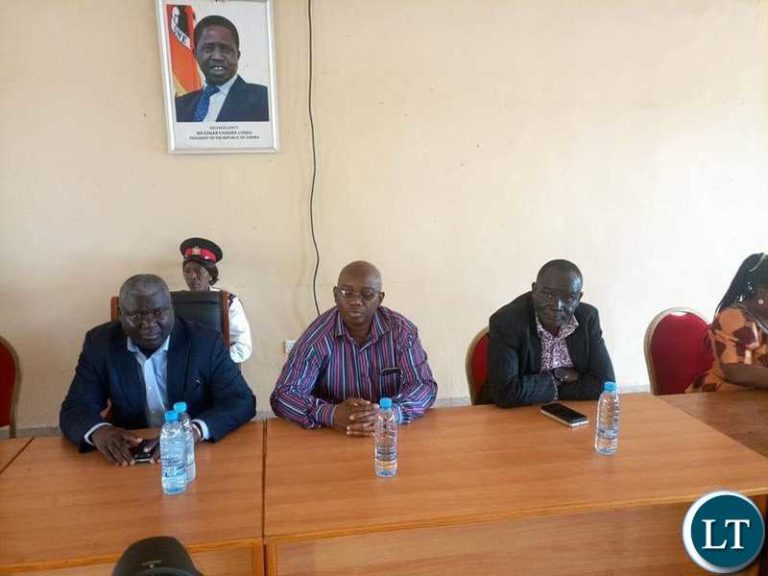UPND President, Hakainde Hichilema says Zambians only have one country therefore they should all get involved and take charge of their destiny.
And Mr Hichilema says that he is committed to restoring law and order immediately he is ushered into State House after 12th August, this year.
Addressing marketeers, small scale and medium entrepreneurs and tax/bus drivers from Central, Copperbelt, Luapula, Eastern and Northern Provinces this afternoon, Mr. Hichilema reiterated that once in office, the UPND will create an enabling business environment to support the various businesses in the country.
He also bemoaned the unprecedented levels of poverty in the country, saying he has never witnessed such levels of suffering in his entire life.
“This is the worst leadership since the colonial masters. At my age, I have never seen the people of Zambia suffer the way they are suffering [now]. This BOMA is worse off than the colonial regime. That is why we need change,” said Mr Hichilema.
Mr Hichilema says the PF is trying to use the ‘draconian’ Cybersecurity Bill NAB2 to gag citizens and stop them from using internet services.
He says no media house will be shut and that political interference in the operations of the media would be a thing of the past immediately he is sworn in.
“No media house will be shut down during our tenure in official. One of the laws we are going to reverse is the cyber security Bill. I don’t whether Mr Lungu is going to sign the Bill, though I know he will. They want you to stop using internet. This is the channel we are going to use to deliver health care to our people. We will use technology to deliver services to our farmers. Our duty is to use internet so that when there is an accident drivers can easily notify the insurance company to come to their aid,” said
He has since promised a week-long mobilization tour of the Copperbelt.
“I want thank our colleagues who have travelled all the way from Copperbelt, Northern, Southern and any other part of the country who have joined us this afternoon. We want to thank you for coming here. I want to assure you that I will be coming to the Copperbelt and I will be spending a week there,” he said.
Speaking during the same event, UPND SG, Batuke Imenda said that the the party had chosen to invite marketeers and drivers from the Copperbelt was as a result of the party’s resolve to bring everyone on board as the country goes to the polls on August 12th.
He also called on members of the UPND to go out in the field and mobilize voters, adding that his office would not allow party members to be lazy.
UPND Taxis and Buses Chairperson, Mr Mutale who led the Copperbelt delegation comprising marketeers and drivers from the constituency, district, and provincial stated that
Meanwhile, Gilbert Liswaniso, who is the UPND National Youth Chairperson, has called on UPND youths across the country to be alert and defend president Hichilema in an event that the Police moved in to arrest him over the Kalomo saga involving the Hatembo family.


